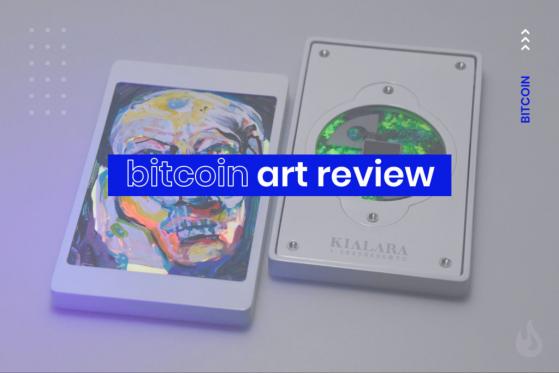Enduring art speaks of the human character and its dilemmas. Desire, the ever-lasting powerhouse of all human drama and endeavor, has been driving technology since the invention of the wheel, and the Kialara Project has much to say about its role in the age of blockchain.
The dream of a world where trade is made free from the influence of governments and banks magnetizes us toward the promises of cryptocurrencies.
Surrendering to Art with Kialara
Kialara, the passionate work of Max Mellenbruch, can be described as a materialized version of Bitcoin, a physical wallet for storing value.
Kialara has gained its prestige not only due to its enthralling aesthetics but also because of the amazing engineering work behind its design, which makes it impossible for a person to access the private key of the bitcoin stored inside without destroying the art.
Every Kialara owner makes the choice between funding the bar or leaving it unfunded. The ones who choose to fund a Kialara face a persistent dilemma between accessing the value stored in the wallet and keeping the integrity of the work of art.
Funding helps construct the dilemmas which define this piece of art as Bitcoin’s value continues to grow. While Max believes Kialara has helped owners hold on to their BTC over the years, preserving the Kialara may become more of a challenge in the years to come.
As the Bitcoin bull-run continues, Kialara preservers will face a real temptation when their beloved crypto-relic is holding a fortune.
Owners will also face tempting offers as Kialara grows in collectible value and becomes a consecrated item in the history of cryptocurrency and crypto art.
Kialara Messengers, carrying on the work of award-winning artist Ricky Allman, try to survive through human temptations to bring forth the message from a future universal culture. A future in which Bitcoin will be cradled as the favorite child of seemingly opposite trajectories of human progress, i.e., art and engineering, creativity and code, and free thought and consensus.
The emerging tensions between financial and artistic value erupt in Kialara’s surface, turning it into a piece of conceptual art. Beyond its aesthetic appeal, it is this tension, engraved in it conceptually, which denotes its importance as a work of art.
According to Plato, Beauty was a high spirit that helped humans glance upon eternity. Contemplating beauty brings humans closer to their eternal essence, whereas monetary value is limited within the constraints of mortal human life, so its value is infinitely smaller. This might explain why most owners would choose to preserve the Kialara rather than selling it, regardless of how much money they could make.
As conceptual art, Kialara’s implications transcend the realm of aesthetics to raise questions also within its medium, the cryptographic keys. Since Max Mellenbruch is the one who handles every customer’s private keys, trust is an essential component behind this art.
He is the center behind the currency of decentralization. One of the cornerstones of blockchain, and one of the main reasons for its acclamation and social relevance, is the release from human trust. Kialara owners, on the other hand, deposit their trust in the honesty and competency of Max and thus acknowledge that human faith is still very much alive.
If the keys are a medium in Kialara, trust is the medium for every human relation in society, tying the knots of social contracts in trade, politics, knowledge distribution, and beyond. In the digital era, the possibility of trust between humans and computers is still being constructed.
Art, however, has not tied the knots with trust. In and of itself, art stands independently from trust.
Surely, once art is appropriated by the market and turned into a product, trust in its authenticity is fundamental.
However, the content or the message imprinted in a work of art needs no trust, it simply is.
Art does not make promises or compromises. A commitment to art is a disposal of trust in favor of artistic freedom. When you read a work of literature, you give up knowing the facts for the sake of appreciating the art, as it discloses essential truths of human existence.
The tech enthusiasts who own Kialara see themselves surrendering to an art that attracted them precisely because it is an icon of their faith in technology.
This is Not a Bitcoin
Memorable works of art are usually capable of crystallizing a tension, contradiction, or a conflict in their very composition. For example, the iconic “Ceci n’est pas une pipe” by Magritte earned its place among the canon of Surrealism because it encapsulated the tension between image and language. This tension served to dissolve the audience’s expectations regarding a work of art.
In an era of ever-increasing digitalization, Kialara gives physical shape to a virtual concept. This sparks similar tensions to what Magritte’s painting did in its time. The dichotomy between virtual and real blurs as society becomes ever more intermingled with cyberspace.
While the question was once whether the image corresponded to the thing, now we can ask whether cryptocurrency corresponds to our conception of money.
Being able to physically experience a Kialara may advance society’s progress toward the virtual, as humans become more intimate with computational concepts. On the other hand, holding Kialara may actually represent the resistance to the abstraction brought about by technology and our attachment to the tangible, concrete, and human.
